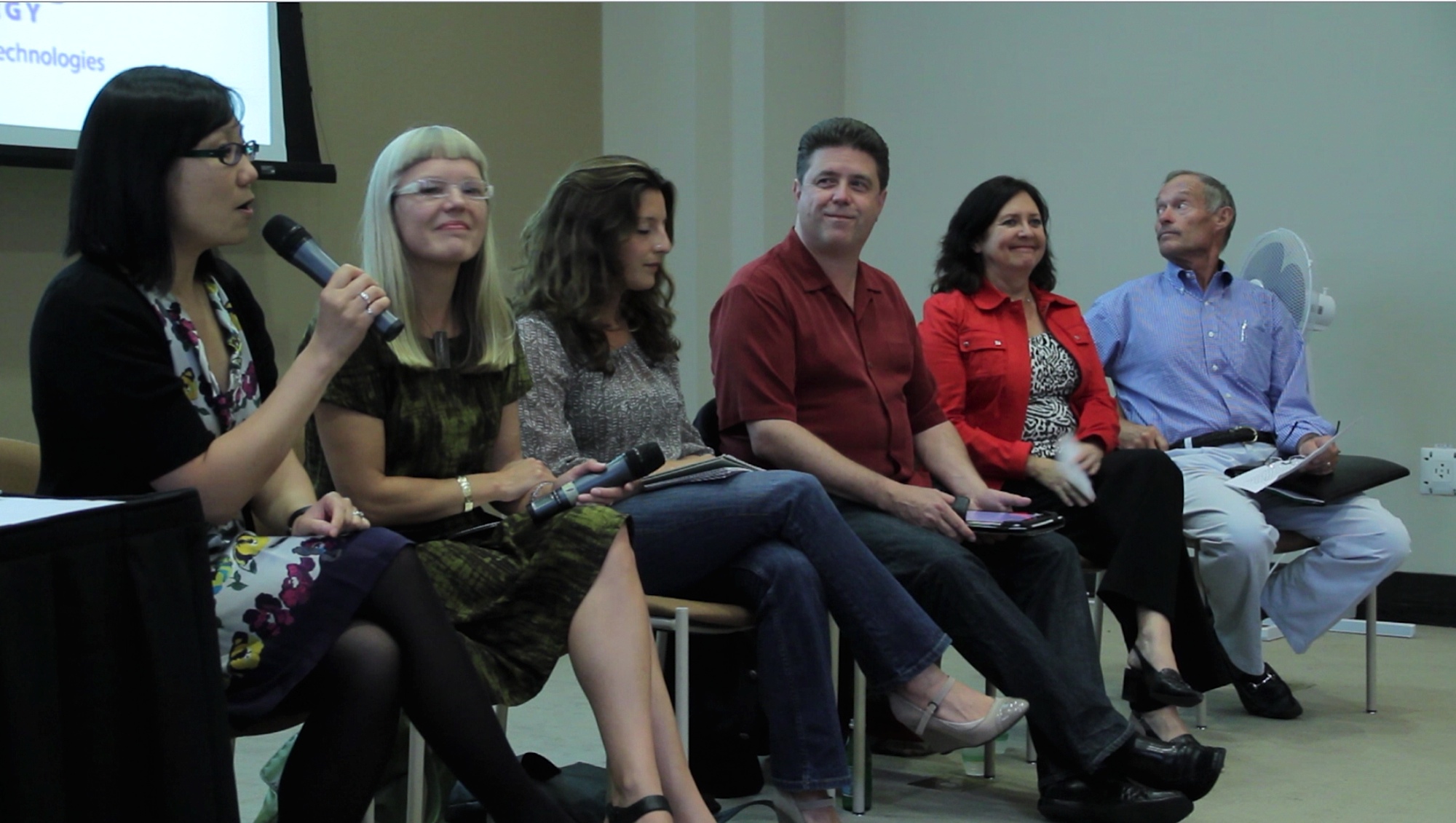A lot of people have been asking me questions about crowdfunding. Some people were hoping to crowdsource donations. Others were looking forward to new platforms where they could source equity from the crowd. Others still were looking for ways to support projects that were meaningful to them.
So I decided to host a “Big Picture” event and invite five speakers to share their experience of sourcing money from a crowd.
 Almost everyone I know has been involved in a crowdfunding campaign in one way or another – as a project creator or as a project supporter. I pledged my support for a Kickstarter campaign, to fund a documentary about women entrepreneurs and women in business. The campaign failed to reach its target in the campaign timeframe so my pledge has not converted into funding. But I’m still supportive of the project – what happens then? I also experimented with running a crowdfunding campaign on FundRazr (the CEO of which, Daryl Hatton, was one of the speakers at the event!) I wanted to get the event filmed, in order to share it with my global network as well as for people who could not attend the event in person. The ticket prices were not going to cover filming and post-production, so I tried crowdfunding it.
Almost everyone I know has been involved in a crowdfunding campaign in one way or another – as a project creator or as a project supporter. I pledged my support for a Kickstarter campaign, to fund a documentary about women entrepreneurs and women in business. The campaign failed to reach its target in the campaign timeframe so my pledge has not converted into funding. But I’m still supportive of the project – what happens then? I also experimented with running a crowdfunding campaign on FundRazr (the CEO of which, Daryl Hatton, was one of the speakers at the event!) I wanted to get the event filmed, in order to share it with my global network as well as for people who could not attend the event in person. The ticket prices were not going to cover filming and post-production, so I tried crowdfunding it.
I chose FundRazr because I wanted to use a made-in-Vancouver platform. It is a straightforward donation platform that is integrated with Facebook, which means I did not have to worry about planning rewards for donations. Part of me wanted to offer a copy of the recording, but with guest speakers and my unfamiliarity around rights to content, I did not want to go that route. And so the reward would simply be supporting an educational endeavour and playing a part in getting the event recorded so that it could be shared more widely.
I found myself in a bit of a quagmire. I did not promote the crowdfunding campaign as much as I promoted the event itself because I wanted people to turn up for the event rather than stay at work or home and watch it online. And quite frankly, I was uncertain about the inherent reward of supporting the filming campaign. I am a big advocate of exchange. I do expect to reward people if they are going to support something – be it a financial return, a product or service reward, or an experience from which a clearly good feeling would arise. My crowdfunding campaign was fuzzy and I knew it. However, there is a happy ending. Once the event reached a certain capacity (it had actually sold out and exceeded the capacity of our original venue. The SFU Beedie School of Business then kindly offered a larger room!), I felt more comfortable about publicizing the crowdfunding campaign because I was no longer competing with myself. I shared it on Twitter, Facebook, and LinkedIn and it was on LinkedIn that it caught someone’s attention. Someone in my network suggested contacting EntrepreneursTV to have the event recorded and the rest is history. That is one of the other, more subtle benefits of crowdfunding campaigns (and venture contests and anything else that has a crowd element to it). You never know who sees it and what other connections or resources it can attract.
65 people, made up of mainly entrepreneurs and aspiring entrepreneurs gathered to talk about crowdfunding. 44 attendees said they were interested in raising money through crowdfunding. 28 people responded “yes” to “Are you looking for ways to invest in ventures or support projects through crowdfunding?” I can only presume that other attendees just wanted to learn more about crowdfunding. It was a highly engaged group of people that asked great questions about fraud (how can you tell if you can trust a project or investor), about the risks of making ideas public, and about women investing in women as a potential crowdfunding theme.
My event sparked another conversation recently about a perception that crowdfunding is an easy way to get funding. Let me bust that myth now – it is not an easy way to get funding. The advice I’ve given people is the following. Your funders are your customers. The funding strategy you seek may actually be a funder or customer acquisition strategy. You need to think about the following this to attract funders:
- What do you offer them? What is your message? Make the message simple. How do funders benefit from supporting your project, cause or the work that you do or your organization does? Is it because you do it the best and your funders want to support getting this work done? Is it because funders cannot do it themselves? Do funders want an organization that they can get involved in? Do they just want to feel good about it?
- Who are your funders/customers? What is their profile? Where do they hang out? How do they like to be reached?
- Build your tribe and build it before you need them. Make it easy for members of your tribe to attract new members to the tribe, make it easy to share.
- Make the ask. Be clear on what you’re asking for. Figure out the best way to ask them. Ask the right people the right thing (i.e. probably ask busy people for money and quick introductions, ask engaged people for little bit of money, to get involved and spread the word).
Here’s the video footage of the panel discussion and a brief Q&A session I moderated, captured by Alice Mathieson at EntrepreneursTV. Unfortunately, we did not record the audience Q&A section – we’re exploring different ways of capturing audience participation, whilst respecting the privacy of those in attendance at future events.




[…] the year she founded Pique Ventures. She hosted conversations to talk about impact, returns, crowdfunding, trust, and giving. One of the models of bridging investment relationships between investors and […]